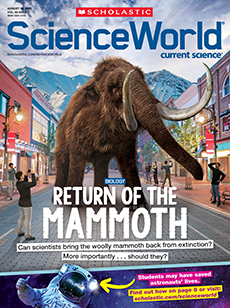JIM MCMAHON/MAPMAN®
Last December, people in Wuhan, China, began suffering from a mysterious flu-like illness. Doctors studying them discovered that the patients had contracted a previously unknown virus—a nonliving particle that invades and reproduces in a living cell. Within two months, the disease, now called COVID-19, had reportedly infected more than 75,000 people in China and killed more than 2,000.
The symptoms of COVID-19 include fever, muscle aches, sore throat, dry cough, and shortness of breath. It spreads when a sick person coughs or sneezes, expelling tiny droplets that contain the virus. These airborne particles can enter the mouths and noses of people up to 1.8 meters (6 feet) away. Touching surfaces covered with the droplets and then your face without washing your hands can also cause you to become infected.
Last December, a mysterious illness appeared in Wuhan, China. People began suffering from flu-like symptoms. Doctors studied them and found that the patients had contracted a previously unknown virus. That’s a nonliving particle that invades and reproduces in a living cell. The disease is now called COVID-19. Within two months, it had infected more than 75,000 people in China. More than 2,000 of them died.
The symptoms of COVID-19 include fever, muscle aches, sore throat, dry cough, and shortness of breath. When sick people cough or sneeze, they spray tiny droplets that contain the virus. That’s how it spreads. These airborne particles can enter the mouths and noses of people up to 1.8 meters (6 feet) away. The droplets also land on surfaces. People could touch them and then touch their face without washing their hands. That’s another way to become infected.

